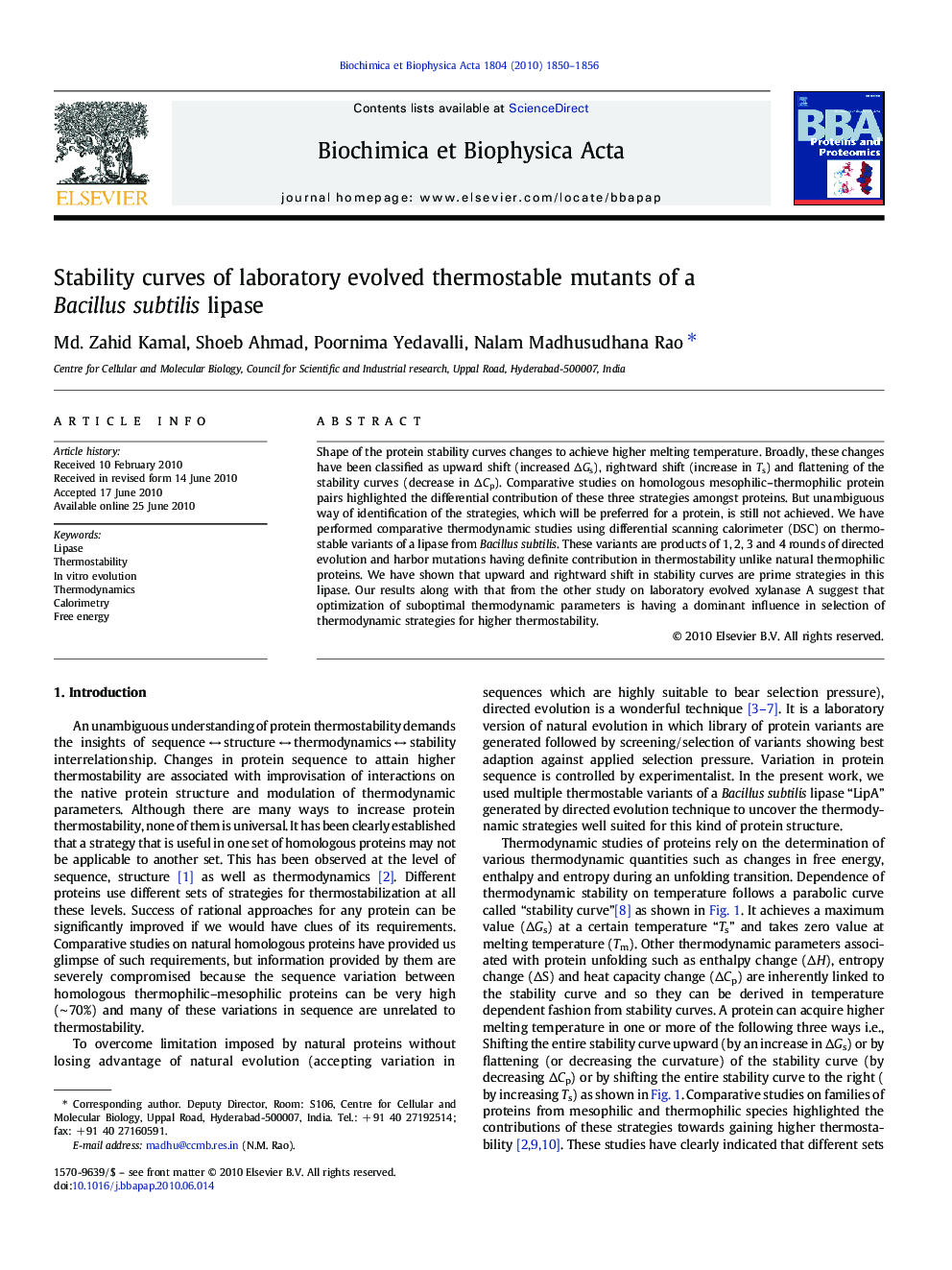| Article ID | Journal | Published Year | Pages | File Type |
|---|---|---|---|---|
| 1178190 | Biochimica et Biophysica Acta (BBA) - Proteins and Proteomics | 2010 | 7 Pages |
Shape of the protein stability curves changes to achieve higher melting temperature. Broadly, these changes have been classified as upward shift (increased ∆Gs), rightward shift (increase in Ts) and flattening of the stability curves (decrease in ∆Cp). Comparative studies on homologous mesophilic–thermophilic protein pairs highlighted the differential contribution of these three strategies amongst proteins. But unambiguous way of identification of the strategies, which will be preferred for a protein, is still not achieved. We have performed comparative thermodynamic studies using differential scanning calorimeter (DSC) on thermostable variants of a lipase from Bacillus subtilis. These variants are products of 1, 2, 3 and 4 rounds of directed evolution and harbor mutations having definite contribution in thermostability unlike natural thermophilic proteins. We have shown that upward and rightward shift in stability curves are prime strategies in this lipase. Our results along with that from the other study on laboratory evolved xylanase A suggest that optimization of suboptimal thermodynamic parameters is having a dominant influence in selection of thermodynamic strategies for higher thermostability.
